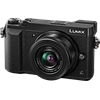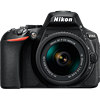Main
Model
Price
Advantages
launch
Announced
Body type
Camera subcategory
Sensor
Effective pixels
Max resolution
Sensor size
Sensor type
Processor
Image ratio w:h
Other resolutions
Sensor photo detectors
Image
ISO
Boosted ISO (minimum)
White balance presets
Custom white balance
Image stabilization
Image stabilization notes
Uncompressed format
JPEG quality levels
Photography features
Minimum shutter speed
Maximum shutter speed
Maximum shutter speed (electronic)
Aperture priority
Shutter priority
Manual exposure mode
Subject / scene modes
Built-in flash
Flash range
External flash
Flash modes
Continuous drive
Self-timer
Metering modes
Exposure compensation
AE Bracketing
WB Bracketing
Screen / viewfinder
Articulated LCD
Screen size
Screen dots
Touch screen
Screen type
Live view
Viewfinder type
Viewfinder coverage
Viewfinder magnification
Viewfinder resolution
Videography features
Resolutions
File Format
Videography notes
Microphone
Speaker
Optics & Focus
Autofocus
Digital zoom
Manual focus
Number of focus points
Lens mount
Focal length multiplier
Physical
Weight (inc. batteries)
Dimensions
Environmentally sealed
Battery
Battery details
Battery Life (CIPA)
Storage
Storage types
Connectivity
USB
HDMI
Microphone port
Headphone port
Wireless
Wireless notes
Remote control
Other features
Orientation sensor
Timelapse recording
GPS
GPS notes
Samples
Videos
Summary
The D5600 maximum resolution of 6000 x 4000 pixels (24 megapixels) is better in comparison with the Lumix DMC-GX85 (Lumix DMC-GX80 / Lumix DMC-GX7 Mark II) maximum resolution of 4592 x 3448 pixels (16 megapixels). The D5600 is equipped with bigger sensor than the Lumix DMC-GX85 (Lumix DMC-GX80 / Lumix DMC-GX7 Mark II): APS-C (23.5 x 15.6 mm) versus Four Thirds (17.3 x 13 mm). It is very important advantage of this camera as large sensor allows the photographer to make photos of the more professional quality. The D5600 offers a wider ISO range of 100-25600 in compare with 200-25600 ISO range of the Lumix DMC-GX85 (Lumix DMC-GX80 / Lumix DMC-GX7 Mark II). This ISO numbers allow you to make good quality photos in low light conditions. The D5600 provides more number of white balance presets - 12. This option gives the photographer more control over colour. The Lumix DMC-GX85 (Lumix DMC-GX80 / Lumix DMC-GX7 Mark II) has more focus points in compare with the D5600: 49 vs 39. More focus points means less risk of losing focus lock while following a moving subject.
The D5600 has articulated:articulated display which will allow the photographer to shoot amazing selfies. The Lumix DMC-GX85 (Lumix DMC-GX80 / Lumix DMC-GX7 Mark II) display is better as it offers more screen dots 1,040,000 in compare to 1,037,000 dots of the D5600 screen. The higher dot count display is better for reviewing pictures on your camera. The Lumix DMC-GX85 (Lumix DMC-GX80 / Lumix DMC-GX7 Mark II) provides better lowest shutter speed - 60 seconds.
The Panasonic Lumix DMC-GX85 (Lumix DMC-GX80 / Lumix DMC-GX7 Mark II) weighs 426g which is 39g lighter in comparison with the weight of the D5600. The D5600 can utilize optional accessory GPS devices. Recording GPS data can be useful for the travel photographer, to be able to go into the photo metadata and find out exactly where an image was taken.
The D5600 has 11 advantages and the Lumix DMC-GX85 (Lumix DMC-GX80 / Lumix DMC-GX7 Mark II) only 5 so the D5600 is the best buy. Get the list of the best offers on Amazon.


